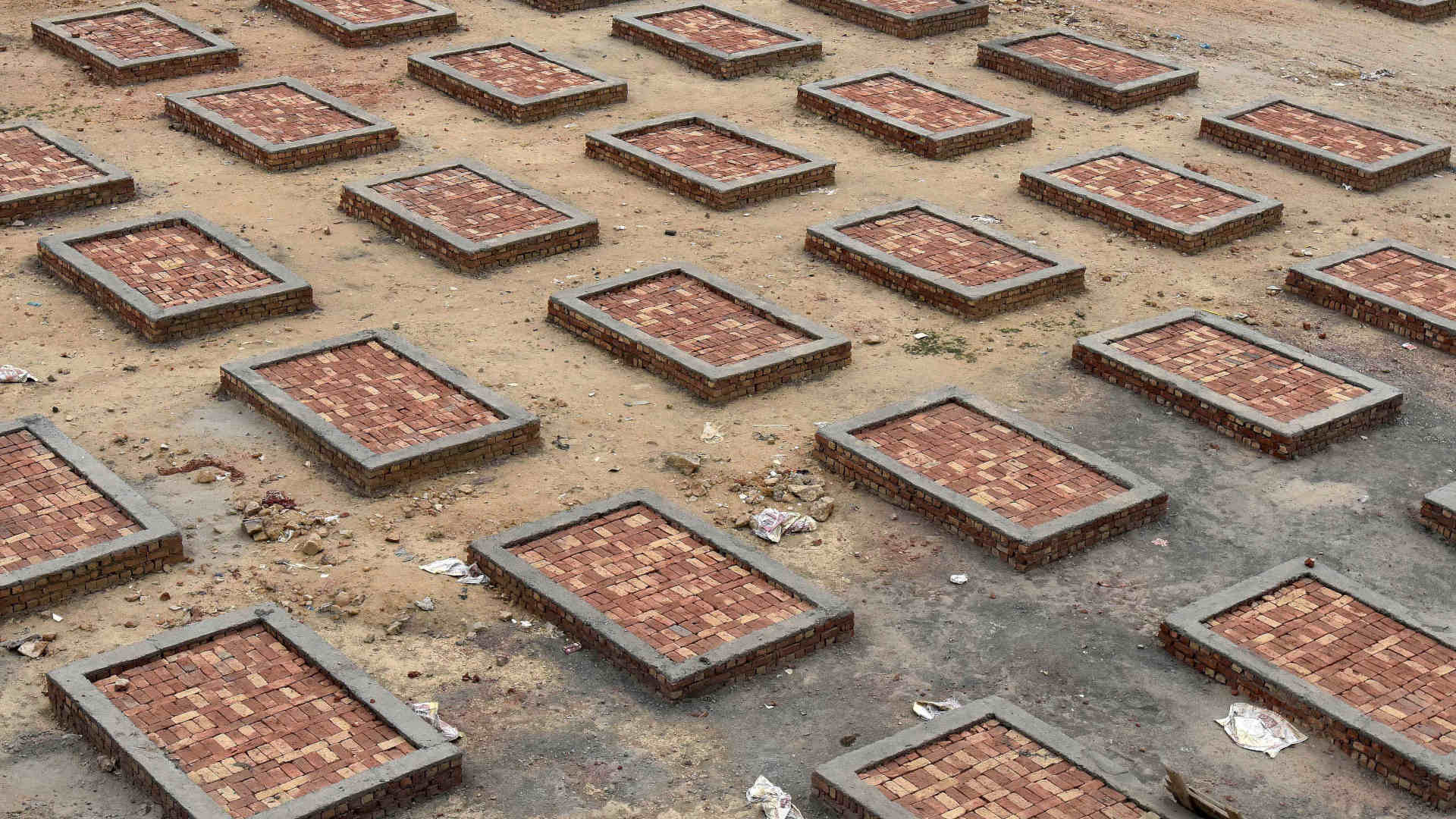On paper, the situation looks grim but hopeful: Two months into a Covid-19 surge that has overwhelmed India’s health care system, new Covid-19 cases are officially declining in the country. In the United States, news of India’s outbreak has faded from the headlines.
But reports from India suggest that the outbreak remains devastating in many parts of the country, prolonging the largest humanitarian disaster of the Covid-19 pandemic.
Accurately gauging the full scope of the pandemic in the world’s second-most populous country can be difficult. Partly, that’s because of incomplete death statistics. Even as new cases appear to decline, the government is reporting around 4,000 Covid-19 fatalities per day, with a record-setting 4,529 deaths recorded in a single day this week. Analysts agree that the true number of deaths from Covid-19 is likely much higher. One recent estimate from The Economist suggested that as many as 31,000 people may be dying in India each day from Covid-related causes. And, based in part on reports from crematoriums and burial grounds, Indian virologist Shahid Jameel estimated earlier this month that deaths could be five to 10 times higher than official counts.
Further complicating efforts to evaluate the scope of India’s outbreak, the brunt may be shifting from urban centers to rural villages. As Puja Changoiwala reported for Undark earlier this month, people in rural India have little access to health care. That shift could also render the pandemic less visible to outsiders: According to Bloomberg this week, “unlike India’s social-media literate urban population,” in rural areas “residents can’t appeal on Twitter to an army of strangers willing to help.” And rural communities have less access to coronavirus tests, meaning cases may not show up in official counts.
Anecdotal reports, though, are harrowing. “In the last 25 days we have heard of 17 deaths in the village,” Manoj Kumar Jaiswal, who lives in Sauram village in north-central India, told The Guardian this week. “Ninety percent of people in this village are sick, every household has someone who has a cough or a fever. Many people in the village are getting a temperature, cough and they die within a day or two.”
As the dead have overwhelmed crematoriums, people have noticed a spike in dead bodies set afloat in the Ganges.
The Covid-19 surge in India, experts say, has likely been fueled by more transmissible new variants of the coronavirus. And while existing vaccines appear to be effective against the most worrying of those variants, those lifesaving shots have yet to reach many people in South Asia.
Also in the News:
• Amid a week of bombings that have destroyed homes, media offices, and other buildings — leaving hundreds dead — authorities reported Monday that an Israeli airstrike damaged Gaza’s only Covid-19 testing lab. Majdi Dhair, director of the Hamas-run Health Ministry’s department of preventative medicine, told The New York Times that the strike targeted a nearby building, but sent debris and shrapnel across the street. While Dhair said he believed the equipment inside the lab was safe, he noted that medical teams would need to stop administering tests while they cleaned up the damage. The conflict has also affected Gaza’s vaccine rollout, as stocks from the West Bank must travel through Israeli territory. As of Monday, just 1.9 percent of Gaza’s residents were fully vaccinated, compared to 56 percent in Israel. Matthias Schmale, director of the United Nations relief agency in Gaza, told The Times last week that as unvaccinated Palestinians crowd into makeshift bomb shelters, those areas “could turn into mass spreaders.” On Thursday, after 11 days of fighting, Hamas and the Israeli government both agreed to a ceasefire. (The New York Times)
• Models aiming to predict how the pandemic may end have suggested that as more people are vaccinated against Covid-19, fewer will end up in the hospital. Just that scenario is now playing out in the Bay Area, which has seen some of the highest vaccination rates in California. According to a report in The Mercury News this week, a little more than 80 percent of residents in Marin County who are eligible to be vaccinated have gotten at least one dose, and hospitalizations have plunged. The patterns are similar across the state. Urban areas in Southern California, for instance, have high vaccination rates and low hospitalizations, while rural areas including Siskiyou County in Northern California have low vaccination rates and more residents in the hospital. As Marin County’s public health officer Matt Willis told The Mercury News: “We’re fortunate, in terms of our vaccination rate across the Bay Area, by and large, to have communities that are following the science.” (The Mercury News)
• For more than 50 years, only a single farm, located at the University of Mississippi, has been permitted by the U.S. government to legally grow and supply cannabis for medical research. That’s about to change. Last Friday, the U.S. Drug Enforcement Administration announced that it is finally making good on a 2016 decision to expand the number of licensed growers. An initial wave of applications filed in the wake of that policy change had languished during the Trump administration. But at least three applicants have now received memorandums of agreement to begin supplying pot for research. Under the scheme, most of the cannabis will be purchased by the DEA, which will then redistribute it to researchers. Many scientists are calling the expansion a win for medical and scientific research, saying that additional growers were sorely needed to supply the quantity and diversity of the plant in order to study its full range of potential medical uses. But at least one legal expert expressed skepticism that the DEA could credibly serve as both purchaser and regulator of cannabis, a drug that remains federally outlawed despite being legal in many states. (The Wall Street Journal)
• This week, researchers in Spain released preliminary results — which have not yet been published or peer-reviewed — suggesting that countries may be able to safely dose people with two different kinds of Covid-19 vaccine. Earlier this year, concerned about vaccine shortages, British regulators suggested a mix-and-match approach, in which people who received a first dose of one vaccine could receive a second dose of another kind. This concept of mixing vaccines has been used previously against other viruses, including Ebola. The strategy can help address shortages of specific vaccines, and, according to some researchers, could potentially outperform immunization with a single kind of shot. The new Spanish study, carried out on 663 participants, showed that people who initially received an Oxford-AstraZeneca dose, followed by a second dose of the Pfizer-BioNTech vaccine, developed antibodies for SARS-CoV-2. According to researchers, people receiving the mixed dosage appeared to experience a larger boost in neutralizing antibodies — proteins that hamper the virus’ ability to infect human cells — than people who had only received the single dose of the AstraZeneca vaccine. (Multiple Sources)
• As climate change warms the planet’s northern regions, a new report warns that such rising temperatures are likely to increase the incidence of so-called zombie fires: blazes that simmer from season to season beneath the forest floor. Zombie fires, sometimes called overwintering fires, are unique to the northern arboreal forests of Siberia, Canada, and Alaska, where the soils are dense with carbon-rich, peat-infused soils that, like the trees growing above them, can burn. The soils tend to ignite during the fall wildfire season and, unlike in more southerly forests, sometimes continue to smolder through the winter, setting the trees on fire again in the spring. The new report, published Wednesday in the journal Nature, catalogs more than 50 examples of such fires and notes some signs that they may be growing more common. The scientists hope that early awareness of the potential for such perpetual fire seasons will encourage governments to collect more official data on overwintering events. (Axios)
• And finally: A report from the CBS News show “60 Minutes” offered more details of a secretive Department of Defense program to investigate unidentified aerial phenomenon, or UAPs — better known to the public as UFOs. According to the Pentagon, the Advanced Aerospace Threat Identification Program (AATIP) ran from 2007 to 2012. In 2017, a story in The New York Times reported AATIP’s existence and included declassified footage of UAPs that had been recorded by the U.S. Navy. Now, with the federal government set to deliver a much-anticipated report on UAPs in June, the “60 Minutes” story offered more details on the government’s investigations, with one former Navy pilot saying he had seen mysterious objects “every day for at least a couple years” while flying. Florida Sen. Marco Rubio, who has been outspoken on the issue and requested the report from the Pentagon, told “60 Minutes” that “some of my colleagues are very interested in this topic and some kinda, you know, giggle when you bring it up.” Still, he continued, “I don’t think we can allow the stigma to keep us from having an answer to a very fundamental question.”(CBS News)
“Also in the News” items are compiled and written by Undark staff. Deborah Blum, Brooke Borel, Lucas Haugen, Sudhi Oberoi, Jane Roberts, and Ashley Smart contributed to this roundup.










